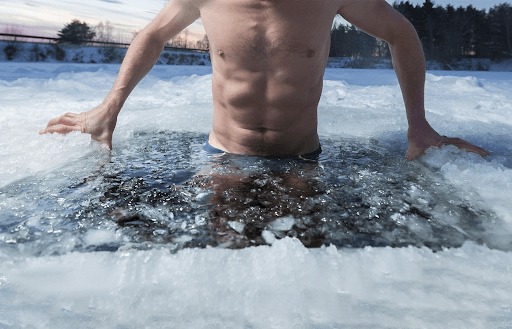
Ice Workouts: Training in Extreme Cold for Fat-Burning.
“Discover the chilling science and transformative benefits of training in extreme cold, where every movement ignites fat-burning, enhances endurance, boosts recovery, and strengthens immunity. From outdoor snow workouts to cryogenic chambers, learn how cold-environment exercise leverages the body’s natural thermogenic and hormonal responses to optimize metabolism, elevate mental resilience, and achieve maximum physical performance safely and effectively.”
💪 Fitness Guru
56 min read · 7, Oct 2025

Introduction
The fitness world is constantly evolving, and one of the most intriguing frontiers to emerge in recent years is training in extreme cold, often called ice workouts or cold training. Once reserved for elite athletes and military personnel, cold-environment workouts are now gaining traction among fitness enthusiasts and wellness seekers. The underlying promise? Better endurance, improved recovery, and — most notably — accelerated fat-burning.
But how does exercising in freezing temperatures actually help the body burn fat? What are the physiological mechanisms at play, and is it really safe for the average person? This detailed article explores the science, methods, benefits, and risks of ice workouts, providing a comprehensive understanding of this chilling but powerful trend in fitness.
The Science Behind Cold Training
To understand ice workouts, one must first grasp how the body responds to cold. The human body is built to maintain an internal temperature of around 37°C (98.6°F). When exposed to cold conditions, it activates various mechanisms to preserve heat — most notably thermogenesis, the process of producing heat within the body.
There are two main types of fat that contribute to thermogenesis:
- White Fat:
- This is the body’s primary energy storage. It stores excess calories and accumulates around the belly, thighs, and arms. White fat contributes little to heat production.
- Brown Fat (Brown Adipose Tissue):
- Brown fat is metabolically active and packed with mitochondria — tiny cell structures that generate heat by burning calories. Unlike white fat, brown fat helps maintain body temperature when exposed to cold.
When you exercise in a cold environment, brown fat activity increases, and the body taps into white fat reserves for additional energy, leading to greater overall fat burn. This is why ice workouts are sometimes referred to as “fat-freezing fitness.”
How Cold Training Boosts Fat-Burning
Cold workouts amplify calorie expenditure through a combination of physiological responses:
- Increased Basal Metabolic Rate (BMR):
- Cold exposure forces the body to work harder to maintain warmth, increasing metabolic rate even after the workout ends.
- Activation of Brown Fat:
- Brown adipose tissue burns calories to produce heat. Research from the Journal of Clinical Investigation shows that regular cold exposure can significantly increase brown fat activity.
- Enhanced Hormonal Response:
- Cold temperatures stimulate the release of norepinephrine, a hormone that accelerates fat breakdown and enhances alertness.
- Post-Workout Thermogenesis:
- The body continues to generate heat after training to restore normal temperature — this “afterburn effect” contributes to extended calorie burn.
In short, an ice workout doesn’t just help you burn calories during the session — it keeps your metabolism elevated for hours afterward.
Popular Forms of Ice Workouts
Cold-environment training comes in various forms, ranging from mild to extreme. Some are easily accessible, while others require professional supervision.
1. Outdoor Winter Running or Cycling
Running or cycling in cold weather (below 10°C/50°F) challenges the respiratory system and cardiovascular endurance. The body must maintain warmth while sustaining energy output, promoting efficient fat metabolism.
2. Cryo-Workouts
These workouts are performed inside cryogenic chambers cooled to as low as -110°C (-166°F). Sessions last 2–3 minutes and are used to enhance recovery, burn fat, and reduce inflammation. Cryo-training is often combined with short bouts of physical movement such as squats or stretches.
3. Ice Bath Training
Athletes use ice baths (10–15°C) for recovery and muscle adaptation. Recently, combining light exercise — like leg movements or core tightening — while in cold water has become a new trend for fat loss.
4. Snow Workouts
In snowy regions, people engage in snow hiking, snowshoeing, or even resistance training in the snow. The uneven terrain and cold exposure increase muscular engagement and calorie use.
5. Controlled Cold Rooms
Fitness centers are now offering cold studios, where indoor workouts take place at temperatures between 7–12°C (45–55°F). These sessions typically involve high-intensity interval training (HIIT), yoga, or strength circuits.
Physiological Benefits of Ice Workouts
Cold training provides a wide range of benefits beyond just fat loss:
- Improved Fat Metabolism:
- Cold exposure enhances the conversion of white fat to brown fat, making the body more efficient at burning calories.
- Enhanced Endurance:
- The cardiovascular system adapts to cold environments, improving oxygen delivery and stamina.
- Faster Recovery:
- Cold reduces inflammation, soreness, and muscle damage, allowing athletes to train more frequently.
- Stronger Immune System:
- Regular cold exposure is linked to increased production of white blood cells, which strengthens immunity.
- Better Mood and Focus:
- Cold exposure triggers endorphin release and increases norepinephrine levels, improving alertness and reducing symptoms of anxiety or depression.
- Hormonal Regulation:
- Cold-induced stress helps balance insulin levels, aiding in better metabolic health.
Risks and Precautions
While ice workouts have undeniable advantages, they also carry certain risks if not done properly:
- Hypothermia:
- Extended exposure to extreme cold can dangerously lower body temperature.
- Frostbite:
- Inadequate clothing or direct contact with ice can lead to tissue damage.
- Respiratory Distress:
- Cold air can constrict airways, posing risks for individuals with asthma or heart conditions.
- Muscle Tightness and Injury:
- Cold temperatures reduce muscle flexibility; therefore, a proper warm-up is crucial before starting.
Safety Tips:
- Always warm up indoors before starting an ice workout.
- Wear thermal, moisture-wicking clothing to prevent sweat freezing.
- Limit exposure to 15–30 minutes for beginners.
- Stay hydrated — cold air dehydrates faster than warm environments.
- Avoid training in extreme temperatures without supervision.
Scientific Research Supporting Cold Training
Multiple studies have confirmed the link between cold exposure and fat metabolism:
- Harvard University (2013): Found that activating brown fat through cold exposure can increase calorie burn by up to 15%.
- National Institutes of Health (NIH, 2015): Reported that repeated cold exposure promotes white-to-brown fat conversion.
- European Journal of Applied Physiology (2018): Showed improved endurance and reduced inflammation in athletes who trained in low temperatures.
- Frontiers in Physiology (2021): Highlighted cold training’s role in improving insulin sensitivity and metabolic function.
These findings indicate that incorporating cold environments into training can be a scientifically valid strategy for enhancing body composition and health.
Sample Ice Workout Routine
Here’s a beginner-friendly, 25-minute cold training session that can be performed outdoors or in a cooled gym:
Warm-Up (5 minutes):
- Arm circles, jogging in place, jumping jacks — done indoors before stepping into the cold.
Main Workout (15 minutes):
- Cold Sprints: 5 rounds of 30 seconds sprint + 30 seconds rest.
- Bodyweight Squats: 3 sets of 15 reps.
- Push-Ups or Plank Holds: 3 sets of 30 seconds.
- Burpees: 3 sets of 10 reps.
Cool Down (5 minutes):
- Gentle walking and deep breathing to normalize body temperature.
This session combines HIIT-style fat-burning intensity with cold exposure thermogenesis, producing an optimal environment for metabolism enhancement.
Who Should Try Ice Workouts?
Ice workouts are suitable for:
- Individuals seeking faster fat loss.
- Athletes needing endurance and recovery boosts.
- People looking to strengthen immunity and resilience.
However, those with cardiovascular, respiratory, or circulatory conditions should consult a doctor before attempting cold training. Pregnant women and individuals with Raynaud’s syndrome should avoid it entirely.
Training in extreme cold, often referred to as ice workouts, is an innovative and increasingly popular method in the world of fitness that combines the physiological demands of exercise with the metabolic effects of cold exposure to maximize fat-burning, enhance endurance, improve recovery, and promote overall well-being, and while it might sound daunting at first, the science behind it is both fascinating and compelling; when the human body is exposed to low temperatures, it activates several thermoregulatory processes aimed at maintaining a stable core temperature of approximately 37°C (98.6°F), and this response is largely mediated through the activation of brown adipose tissue, or brown fat, which is metabolically active and contains a high concentration of mitochondria that generate heat by burning calories, unlike white fat, which primarily serves as an energy storage tissue; the activation of brown fat through cold exposure not only increases calorie expenditure during the workout itself but also maintains elevated metabolism for hours afterward, creating what researchers refer to as a “post-exercise thermogenic effect,” which is particularly beneficial for individuals seeking to accelerate fat loss in a safe and natural way, and this is further complemented by the hormonal responses induced by cold stress, including the release of norepinephrine, which not only boosts alertness and mental focus but also stimulates lipolysis, the process by which stored fat is broken down into fatty acids for energy, thereby contributing to an overall increase in fat-burning potential; ice workouts can take many forms, from outdoor winter running, snowshoeing, and hiking in sub-zero conditions to more controlled indoor environments such as cryogenic chambers and cooled fitness studios, each offering distinct advantages depending on the goals and fitness levels of the participant, with outdoor activities providing the added challenge of uneven terrain and variable weather conditions, which further engages stabilizing muscles and enhances cardiovascular endurance, while indoor cold environments allow precise control over temperature and humidity, making it easier for beginners to safely acclimate to the cold while performing structured exercises like high-intensity interval training, yoga, or bodyweight circuits; for instance, cryo-workouts, which typically involve short bursts of exercise in chambers cooled to -110°C, have gained popularity among athletes and biohackers for their combined benefits of fat metabolism, reduced muscle inflammation, and improved recovery times, while ice baths, traditionally used for post-exercise recovery, are now being adapted to incorporate light movements such as squats or core contractions, further enhancing calorie expenditure and metabolic activation; the physiological adaptations to ice workouts are remarkable: in addition to increasing brown fat activity and enhancing caloric burn, exposure to cold conditions forces the cardiovascular system to work more efficiently, improving oxygen delivery to muscles and increasing endurance, and cold training has also been shown to strengthen the immune system by stimulating white blood cell production, reduce inflammation, and improve insulin sensitivity, which collectively contribute to better metabolic health and overall resilience; moreover, cold exposure has profound effects on the nervous system, triggering the release of endorphins and norepinephrine, which can elevate mood, sharpen focus, and reduce stress and anxiety, creating both physical and mental benefits that extend beyond the immediate workout; however, despite these impressive advantages, ice workouts carry inherent risks if not performed responsibly, including hypothermia, frostbite, respiratory distress, and muscle stiffness or injury, which necessitate careful preparation such as proper warm-ups, layering with thermal and moisture-wicking clothing, limiting exposure time for beginners, staying hydrated, and gradually increasing intensity and duration to allow the body to adapt safely; research studies support these benefits, with Harvard University demonstrating that cold exposure can increase caloric expenditure by up to 15% through brown fat activation, the NIH confirming that repeated cold exposure promotes the conversion of white fat to brown fat, and publications in the European Journal of Applied Physiology highlighting improvements in endurance, reduced muscle inflammation, and enhanced recovery in athletes training in cold environments; practically, ice workouts can be structured to suit any fitness level, from beginners starting with mild cold exposure and low-intensity exercises to advanced athletes incorporating high-intensity interval training or strength workouts in sub-zero conditions, with sample routines often including a warm-up indoors, followed by 15–20 minutes of cold-environment training with exercises such as sprints, burpees, squats, push-ups, and core movements, and concluding with a proper cool-down to gradually normalize body temperature, and when performed consistently, 2–3 times per week, these sessions can significantly enhance fat metabolism, improve muscular endurance, accelerate recovery, and boost mental resilience, all while providing a unique and invigorating fitness experience that differs greatly from conventional workouts; therefore, ice workouts are not merely a passing trend but a scientifically grounded approach to fitness that leverages the body’s natural thermogenic response to cold, hormonal adaptations, and cardiovascular and muscular engagement to optimize fat loss and overall health, making it an attractive option for individuals seeking efficient and holistic fitness strategies, provided they follow safety protocols, listen to their bodies, and progressively adapt to the intensity of cold exposure, combining it with balanced nutrition, regular hydration, and complementary exercise regimens for maximum results, ultimately transforming the way we perceive the role of environmental stressors in exercise and highlighting the fascinating interplay between human physiology and extreme conditions that can be harnessed to improve body composition, metabolic health, recovery, and psychological well-being, offering a comprehensive, science-backed approach to fitness that challenges the conventional wisdom of working out solely in comfortable, controlled environments and opening new avenues for those willing to embrace the invigorating and demanding world of cold-environment training.
Ice workouts, or training in extreme cold, have emerged as one of the most intriguing and scientifically backed methods in modern fitness for accelerating fat loss, improving endurance, enhancing recovery, and optimizing overall health, and while the concept may seem extreme or even uncomfortable at first glance, the physiological mechanisms behind it are both fascinating and highly effective, as the human body is inherently designed to maintain a stable core temperature of approximately 37°C (98.6°F), and when exposed to cold environments, it activates a series of thermoregulatory processes to preserve heat, including shivering thermogenesis, vasoconstriction, and the activation of brown adipose tissue, or brown fat, which differs from the more common white fat in that it contains a high density of mitochondria, cellular organelles that produce heat by burning calories, meaning that the more brown fat a person has, the more energy their body can expend simply by staying warm, and research has shown that regular exposure to cold can also stimulate the conversion of some white fat into metabolically active beige fat, further enhancing the body’s fat-burning potential; in addition to fat metabolism, cold training triggers hormonal responses such as the release of norepinephrine, which not only increases calorie expenditure by stimulating lipolysis—the breakdown of stored fat into usable energy—but also boosts alertness, focus, and mood, making ice workouts beneficial not only for physical health but also for cognitive and emotional well-being, and this dual effect on both mind and body is one of the reasons why cold-environment training has become popular among elite athletes, fitness enthusiasts, and wellness communities alike; there are multiple methods for incorporating cold exposure into workouts, ranging from outdoor activities like running, cycling, hiking, or snowshoeing in sub-zero temperatures to more controlled indoor environments such as cold studios maintained between 7–12°C, cryogenic chambers cooled to as low as -110°C, or ice baths in which light movement or stretching can be performed, with each method offering unique benefits: outdoor activities add the challenge of uneven terrain and wind resistance, further engaging stabilizing muscles and increasing cardiovascular demand, while indoor cold studios or chambers provide a controlled environment where beginners can safely acclimate to the cold while performing structured exercises like bodyweight circuits, high-intensity interval training (HIIT), yoga, or strength workouts, and even short sessions of 15–20 minutes can lead to significant metabolic activation and fat-burning effects, particularly when combined with proper warm-ups, hydration, and safety measures; the physiological advantages of ice workouts are extensive, beginning with enhanced calorie burn during and after exercise due to thermogenesis, increased activity of brown fat, and elevated post-exercise metabolic rate, which is often referred to as the “afterburn effect,” meaning the body continues to consume more calories even after the session ends, and beyond fat metabolism, cold training improves cardiovascular efficiency as the heart and blood vessels adapt to maintain heat distribution, enhances muscular endurance by challenging muscles to work effectively under stress, reduces inflammation and muscle soreness, thereby accelerating recovery, and strengthens the immune system by stimulating the production of white blood cells, creating a comprehensive approach to physical fitness that also supports long-term health; however, despite its numerous benefits, ice workouts carry inherent risks, particularly if safety protocols are ignored, including hypothermia from prolonged exposure, frostbite from direct contact with ice or extreme cold, respiratory distress from inhaling cold air, and increased risk of muscle strains or joint injuries due to reduced flexibility in low temperatures, which is why experts emphasize the importance of gradual adaptation, layering with thermal, moisture-wicking clothing, limiting initial exposure times, maintaining proper hydration, and combining cold workouts with standard exercise routines rather than replacing them entirely, as the synergy of traditional cardio, strength training, and cold-induced thermogenesis maximizes fat-burning while minimizing risk; scientific research strongly supports these benefits, with studies from institutions such as Harvard University demonstrating that activation of brown fat through cold exposure can increase caloric expenditure by up to 15%, the National Institutes of Health highlighting the conversion of white fat to metabolically active brown fat with repeated cold exposure, and publications in the European Journal of Applied Physiology confirming improvements in endurance, metabolic function, and inflammation reduction in athletes training in cold environments, and more recent research also shows that regular cold exposure may improve insulin sensitivity, regulate hormone levels, enhance cardiovascular health, and even improve mental resilience by releasing endorphins and norepinephrine, which positively affect mood, focus, and stress adaptation; practically, ice workouts can be tailored to suit varying levels of fitness, with beginners advised to start with mild cold exposure and shorter sessions incorporating light activity such as brisk walking, gentle squats, or core engagement, while advanced athletes may perform HIIT, plyometrics, or resistance exercises in colder conditions to maximize both cardiovascular and metabolic benefits, and sample routines often include an indoor warm-up of 5–10 minutes to prepare muscles, 15–20 minutes of cold-environment training with interval exercises like sprints, burpees, push-ups, or bodyweight squats, and a proper cool-down to gradually return the body to normal temperature, and when performed consistently two to three times per week, these workouts can significantly accelerate fat loss, enhance stamina, improve muscular recovery, strengthen the immune system, and elevate mood, making them a holistic approach to fitness; in addition to physical advantages, ice workouts provide unique psychological benefits, as exposure to challenging environments builds mental toughness, resilience, and the ability to maintain focus under stress, which can translate into improved performance both in athletic contexts and daily life, and many practitioners report heightened energy, reduced anxiety, and improved overall well-being as a result of regular cold training, illustrating that the benefits of ice workouts extend far beyond simple calorie burning or weight management; overall, ice workouts represent a scientifically validated, highly effective, and increasingly accessible method for optimizing fat-burning, improving endurance, accelerating recovery, and promoting mental clarity, and while they require careful planning, gradual adaptation, and attention to safety, their combination of physiological, hormonal, and psychological benefits makes them a powerful addition to modern fitness strategies, demonstrating the remarkable ability of the human body to adapt to environmental stressors, leverage thermogenic processes, and achieve superior physical and mental outcomes in ways that conventional training alone may not provide, making cold-environment training not just a trend, but a valuable and evidence-based approach for anyone looking to enhance fat metabolism, overall health, and well-being while challenging themselves in a unique and invigorating manner.
Conclusion
Ice workouts combine exercise physiology with the biological effects of cold exposure, creating a unique synergy that enhances fat-burning, boosts endurance, and supports recovery. The cold forces the body to become more metabolically efficient, activating brown fat and increasing thermogenesis.
However, these benefits come with potential risks. Without proper preparation and safety measures, cold training can lead to hypothermia, frostbite, or injury. Therefore, ice workouts are best approached gradually, under professional guidance, and with a focus on balance between exposure and protection.
In the modern fitness landscape, where innovation meets biology, training in extreme cold stands out as one of the most effective — and exhilarating — ways to burn fat and strengthen both body and mind.
Q&A Section
Q1:- What exactly are ice workouts?
Ans:- Ice workouts refer to training sessions performed in cold environments — such as snow, ice chambers, or outdoor winter conditions — designed to enhance metabolism, endurance, and fat-burning efficiency.
Q2:- How do ice workouts help in burning fat?
Ans:- The body burns extra calories to maintain core temperature in cold environments. This activates brown fat and triggers thermogenesis, leading to greater fat oxidation and calorie expenditure.
Q3:- Are ice workouts safe for beginners?
Ans:- Yes, but only with proper precautions. Beginners should start with mild cold exposure (around 10–15°C) and short sessions while wearing thermal protection and warming up adequately.
Q4:- Can ice workouts replace regular exercise?
Ans:- No. Ice workouts should complement, not replace, regular training. They are most effective when combined with traditional cardio and strength exercises.
Q5:- How often should someone train in cold environments?
Ans:- 2–3 sessions per week are sufficient to see benefits. Overexposure may stress the body or lead to cold-related injuries.
Similar Articles
Find more relatable content in similar Articles

Fitness as Therapy for Anger, Stress, and Sadness...
Fitness is not just about buil.. Read More

Unisex Body Care Secrets: Tips for Healthy, Glowing, and Od..
Unisex body care is about mai.. Read More

Body Care Habits You Should Never Skip — For Both Him and H..
Body care isn’t just about lo.. Read More

Ice Workouts: Training in Extreme Cold for Fat-Burning...
“Discover the chilling science.. Read More
© 2024 Copyrights by rFitness. All Rights Reserved.